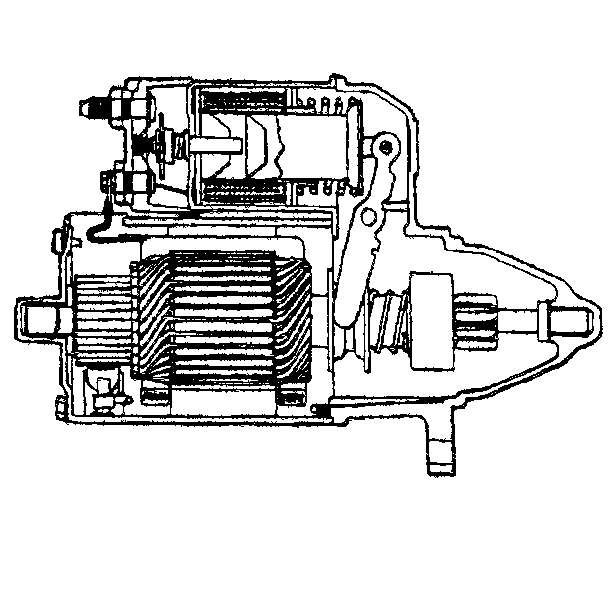Notice: Do not crank the starter motor for more than 30 seconds at a time. Cool for at least two minutes after cranking before continuing. Excessive cranking can cause serious damage to the starter motor as well as erroneous test results.

When the ignition switch is turned to START position, voltage is applied to the solenoid S terminal and the solenoid windings are energized. This causes the plunger to move the shift lever, which engages the pinion with the engine flywheel ring gear. The plunger also closes the solenoid switch contacts, applying battery voltage to the starter motor which cranks the engine.
When the engine starts, the pinion will overrun and spin at engine speed (rather than starter motor speed) to help prevent flywheel and starter motor damage. When the ignition switch is released (removing voltage from the solenoid) the plunger return spring disengages the pinion. To prevent excessive overrun, the ignition switch should be released as soon as the engine starts.
